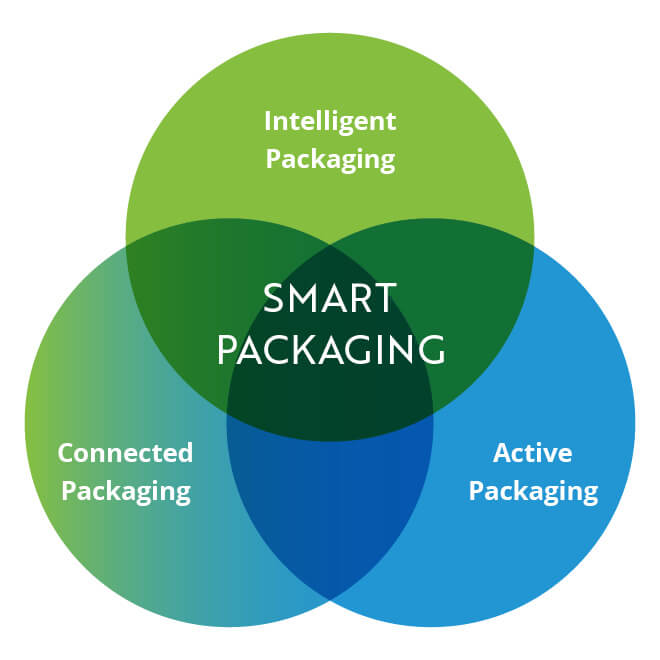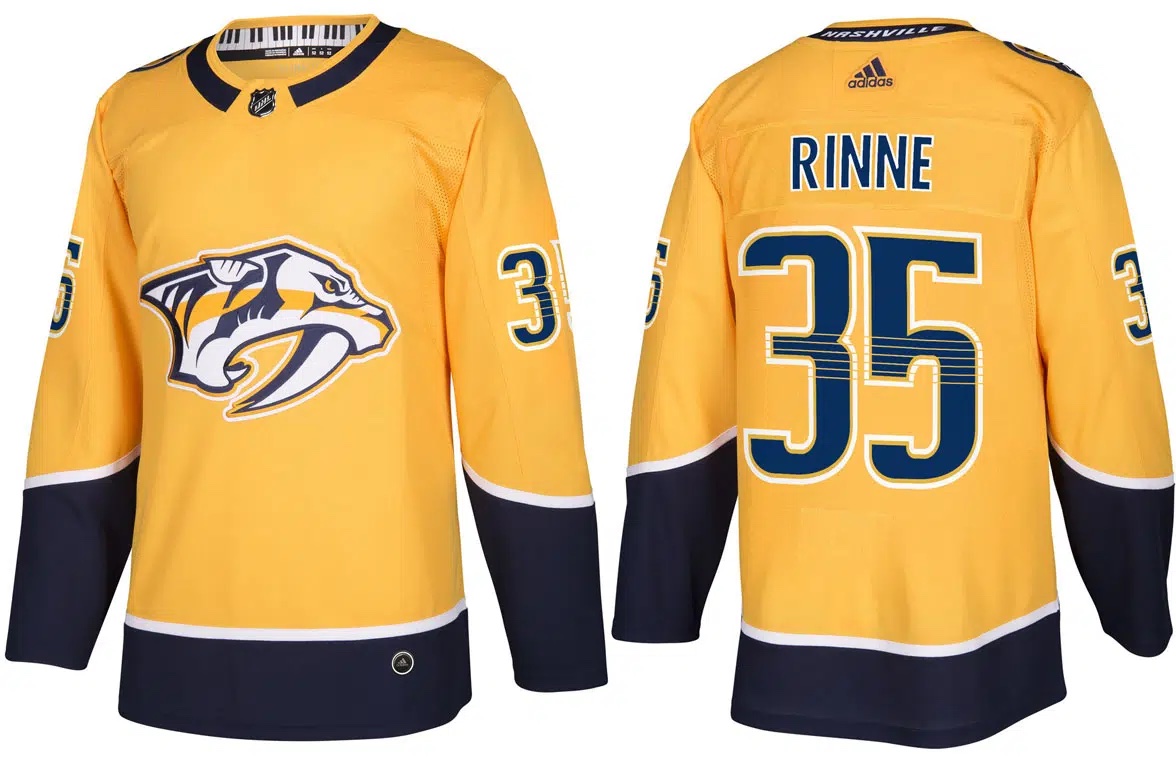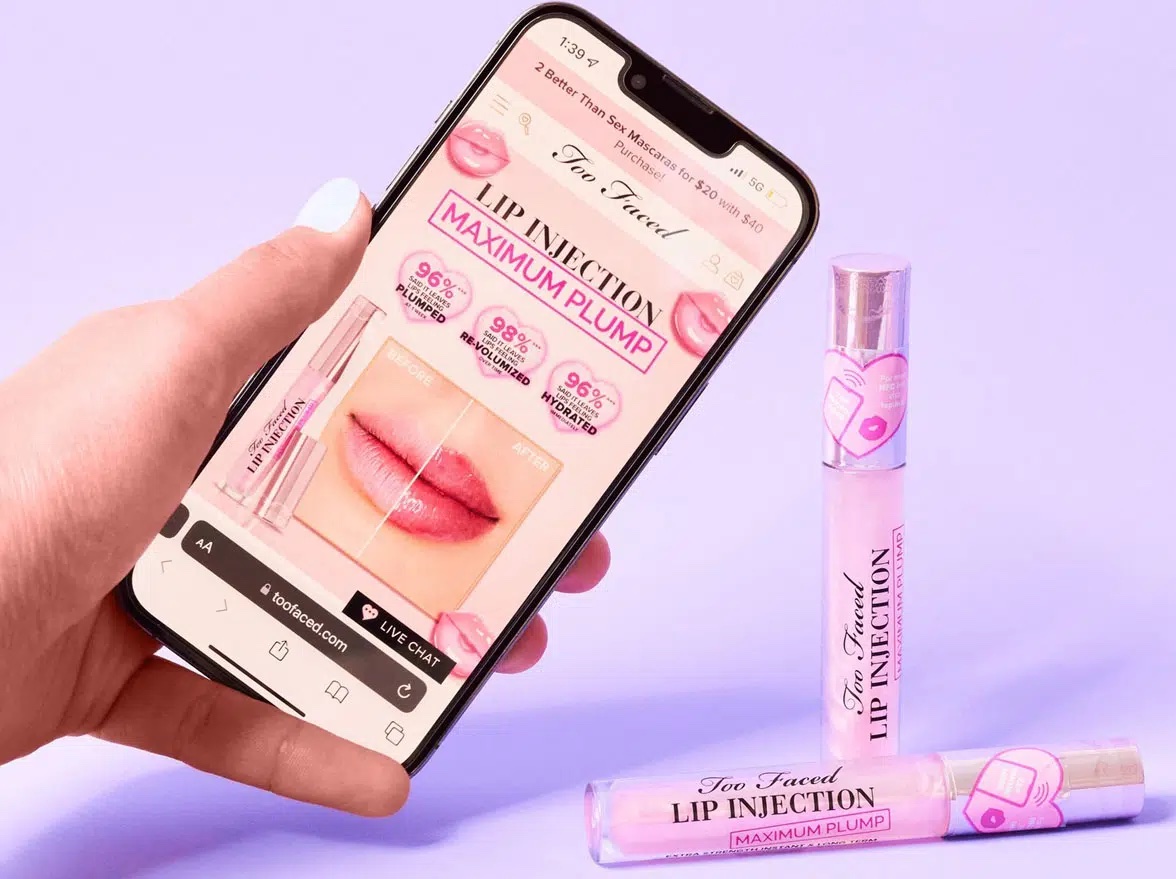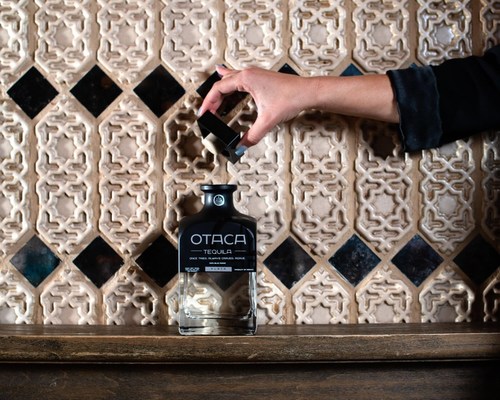Smart Packaging - Using RFID to Connect Products to the Digital World
The term Smart Packaging describes the use of technology, indicators, or even chemicals to enable a specific functionality on or within a product’s packaging.
Smart Packaging is used on a variety of different products, including food, pharmaceuticals, apparel, and technology, and can be broken down into three more specific terms – Active packaging, Intelligent packaging, and Connected packaging.

Active Packaging - Active packaging refers to packaging a product with items that have an active function rather than just passively protecting the product. An example of this could be moisture control packets or even corrosion inhibitors. 1
Intelligent Packaging - Intelligent packaging refers to packaging a product with items that monitor the condition of the product, such as temperature or moisture sensors/loggers. 2 This can be done with RFID sensor tags, or through a biosensor, gas sensor, or chemical sensor for example.
Connected Packaging - Connected packaging refers to packaging that consumers can interact with in order to learn more about the product, authenticate the product, or provide another type of customer engagement. Connected Packaging is typically created by using QR codes or NFC RFID tags.
Because Active Packaging is typically achieved without the use of technology, for the remainder of this article we will focus on Intelligent and Connected Packaging.
Intelligent Packaging
Tamper-Evident Packaging
Tamper-Evident Packaging can be accomplished by a simple aluminum foil covering around the opening, or a more advanced method like using an RFID tag to digitally record if a product has been opened. To learn more about Tamper-Evident Packaging with RFID and the ways that it is used, check out our article - Tamper Evident RFID Tags.
Sensor Monitored Packaging
Mainly used in the food and healthcare industries, sensor-monitored packaging can be very beneficial for products that have strict temperature or moisture regulations. Monitoring these products can be accomplished with RFID sensor monitoring tags for moisture and temperature like the Smartrac Sensor Tadpole and the Sensor Patch.
To learn more about RFID Sensor Monitoring, check out our article Sensor Monitoring with RFID.
Connected Packaging
Authentication/Preventing Counterfeiting

RFID tags are often used for authentication measures, especially NFC RFID tags. Using RFID for authentication has become increasingly popular due to the prevalence of counterfeit products - especially in the healthcare industry; for example, counterfeit N95 masks, and counterfeit COVID-19 vaccines. To read more about using RFID and NFC for authentication, check out our article NFC RFID Product Authentication Applications.
Check out how the Nashville Predator’s hockey team is using NFC for authentication. Here’s the press release.
Personalized Content
Special, personalized content that can be accessed pre- or post-purchase is achieved by using an NFC tag on a product’s packaging. Some of the most common types of personalized content include:
- Product Registration
- Product Coupons
- Brand Storytelling
- Special Rewards
An NFC tag can be placed on the outside of a product’s packaging or hidden under a label so that the content is only ‘unlocked’ once the product is opened after purchase. One example of using NFC for personalized content is Clinique’s new Moisture Surge 100H Moisturizer with specialized digital content that is, according to the brand, part of the rise of connected products. Clinique’s CEO states:
“This is a defining moment for the industry. When we look back on the meteoric rise of connected products, I believe Clinique’s launch will be referenced as the tipping point.”
In addition, Clinique states that the ability to use NFC for brand engagement and personalized content is a packaging innovation. To read the press release - click here.
Consumer/Brand Engagement
Consumer/Brand Engagement can easily be facilitated directly on a product’s packaging and isn’t limited to one specific interaction. One NFC tag as the engagement point could provide personalized content and trust-building elements, as explained above, and in addition could encourage customers to:
- Register for a sweepstakes or contest
- Answer a poll/survey
- Follow the brand/product on social media
- Download a brand’s app to encourage additional consumer-to-brand communication
- Contact the brand directly through email/social media/phone
- Watch videos, such as unboxing videos on the product
- Read customer testimonials
NFC RFID is currently being used to drive engagement in Estée Lauder’s ‘Too Faced’ brand, which is adding NFC tags to specific product samples. The brand released a statement describing the strategy behind using this technology, stating:
“Instead of just giving someone a product, [we asked ourselves] ‘How can we educate, entertain and inspire them to want to learn more about the product and want to engage with the brand in a new way?’”

Read the full Estée Lauder/Too Faced press release here.
Product Reordering (& Product Accessories)
Creating a quicker, easier method to reorder a product can be an easy win for both the brand and the consumer and this can be accomplished via a product’s packaging. However, it’s important to remember that most products’ external packaging, such as a box or shrink wrap, will not typically be kept throughout the lifecycle of the product. Because of this, it’s important to determine the ideal location for an NFC tag reorder point that will be available throughout the use of the product. Below are a few examples of products and ideal NFC tag placements -
- Medium Lifespan Products - Cosmetics, Liquor - Ideally an NFC tag would be placed on the bottle, jar, or compact to easily be tapped when the product inside is running low.
- Consumables - Batteries, Paper, Specialty Food - Typically an NFC tag would be placed on a branded card toward the bottom or back of the consumables.
- Extended Use Products - Electronics, High-End Retail - Most of the time, an NFC tag is placed inside the packaging or, in some cases, the product itself, in order to promote ordering product accessories. Product accessories or complementary products can easily be looked over at the time of purchase, but that decision can quickly become a regret after a few days have passed. An NFC tag can facilitate upselling after the point of sale.
Product Expiration/Instructions/Safety/Dosage
Some products just do not have enough space on the product itself and/or the packaging to provide all the necessary information to a consumer. Instead of attaching or inserting an entire booklet to a product or its packaging, simply use an NFC tag on the product to safely present the information for the life of the product.
Product Traceability
Product manufacturers in certain industries must have a secure way to track products through the supply chain due to product recalls. RFID can make this a digital process that begins when the product is made and ends when the product is purchased. An RFID label can be placed on the inside label of meat or on the outside of a bag of lettuce and be read at each step of the supply chain, and that data can be recorded in a database.
Each of these different applications of Smart Packaging can be incredibly unique and successfully implemented by using RFID technology. Creating a truly connected experience for consumers and brands alike is the future of packaging, but brands do not have to settle on just one of the above applications. Learn about how OTACA Tequila is innovating with NFC-enabled smart packaging for ‘authentication, transparency, customer loyalty, and brand awareness’ in the press release below. The brand states:
"We have worked hard to create a highly personalized experience for our OTACA Tequila customers…Each purchased bottle maps a journey, inviting a digital touchpoint with product provenance and authentication upon every consumer NFC tag tap. “

Learn more about OTACA tequila here.
Conclusion
For more information about Smart Packaging - comment below or contact us.
1. Active Packaging - https://en.wikipedia.org/wiki/Active_packaging
2. Intelligent Packaging - https://packaging360.in/insights/intelligent-packaging-systems-for-food/
3. What is Connected Packaging - https://www.sharpend.com/what-is-connected-packaging
